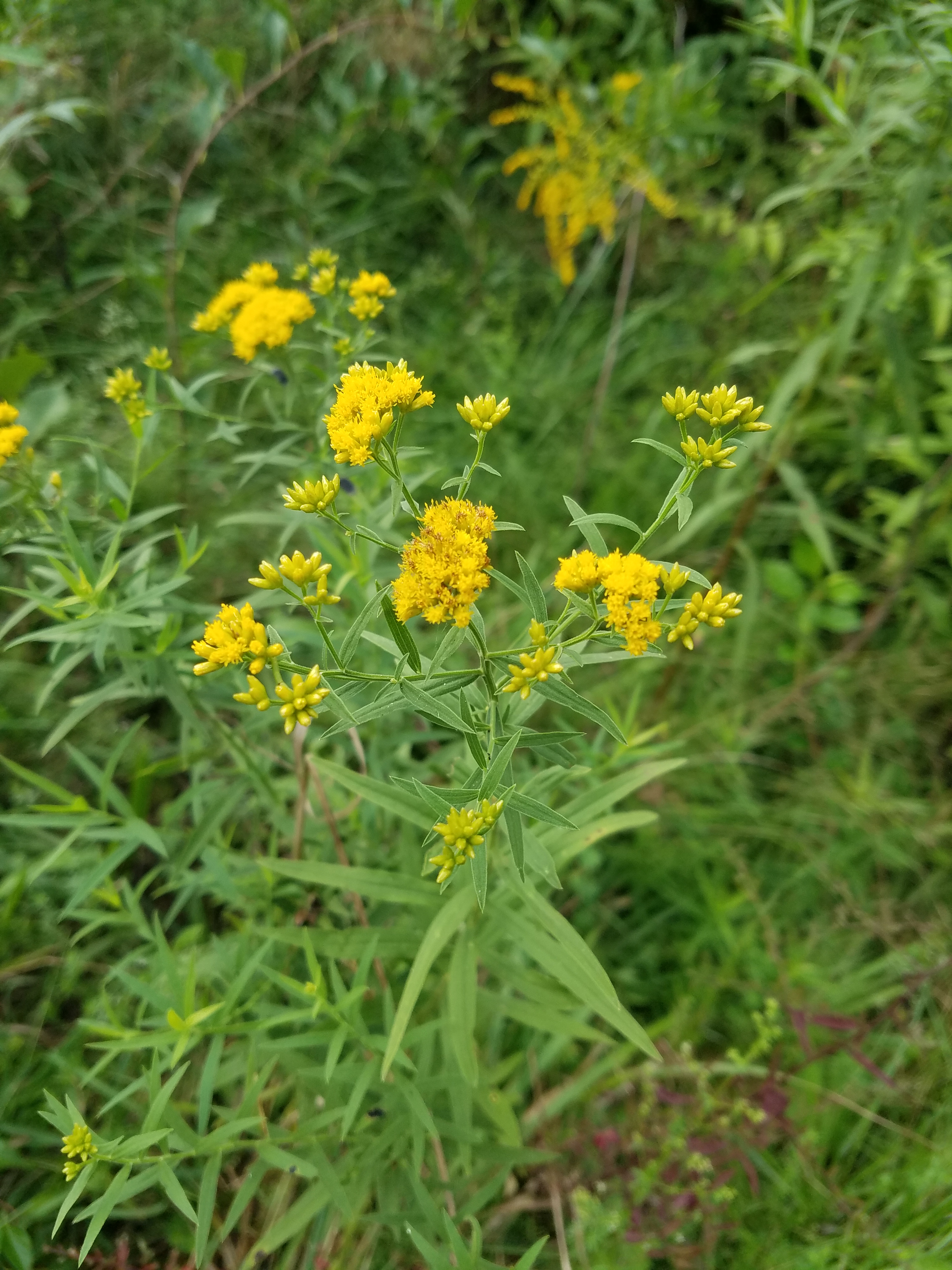
Common names: flat-top goldenrod, grass-leaved goldenrod, lance-leaved goldenrod
Unlike its more common cousins, this goldenrod bears its yellow flowers in flat-topped groupings, rather than spikes or pyramidal cascades. The leaves are narrow and linear. It usually ranges between two and three feet in height, and thrives in the open sunlight of fields of a variety of moisture.
It is an attractive plant to many pollinators, dozens of bees, wasps, and flies, which feed on the nectar, pollen, and tissues of the plant. Like some other goldenrods, Euthamia graminfolia has been shown in laboratory studies to have some degree of allelopathy or the production of chemicals to inhibit the growth of other plants, however, field tests show that this does not have an impact on the overall diversity or turnover of a meadow, in fact a 2010 study actually showed a slight increase in biodiversity where goldenrod were present.
Like other goldenrods, it can be used to produce dyes of varying shades of yellow, orange, and green, depending on the mordant. It has also had a variety of medicinal uses.
Works cited:
Nikki L. Pisula and Scott J. Meiners “Allelopathic Effects of Goldenrod Species on Turnover in Successional Communities,” The American Midland Naturalist 163(1), (1 January 2010).
https://www.illinoiswildflowers.info/prairie/plantx/gr_goldenrodx.htm
https://pfaf.org/user/Plant.aspx?LatinName=Euthamia+graminifolia
http://www.illinoiswildflowers.info/flower_insects/plants/gr_goldenrod.htm